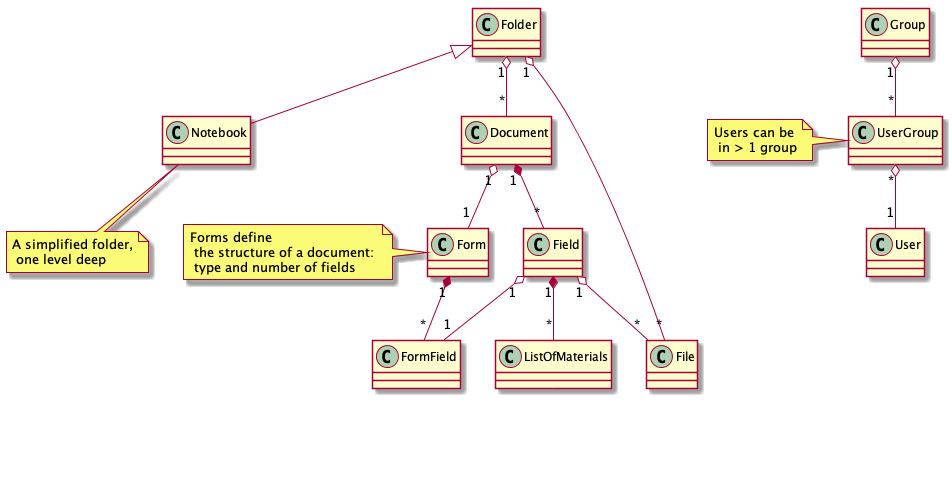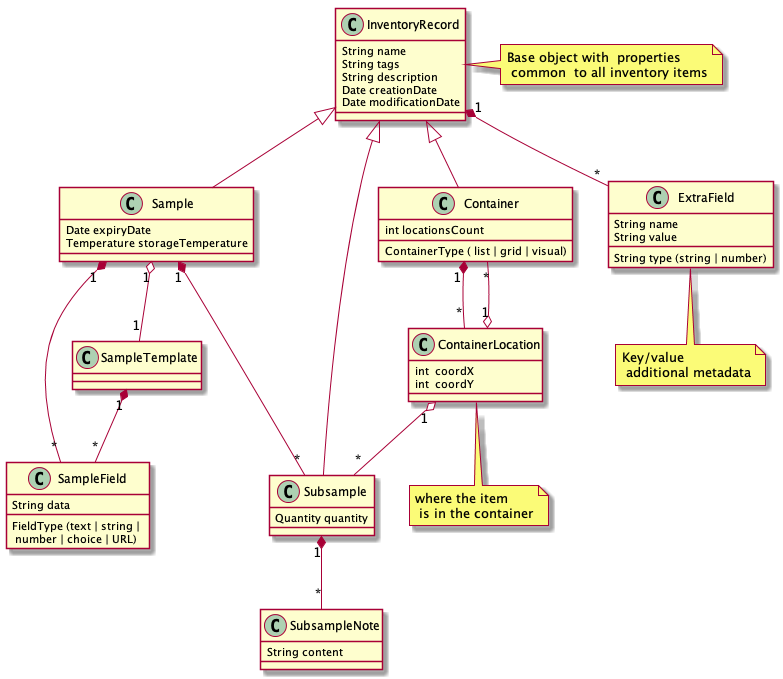API Data model
Here is described an overview of the data models for RSpace ELN and Inventory APIs.
1. RSpace ELN Data model
The RSpace ELN API data model contains all the elements present in the UI, but in a simpler form. The diagram shows the relations between the elements.
Folders and Notebooks are containers for Documents. Gallery Folders contain Files. A document contains one or more Fields that contain the document's content and links to attached Files.
The type and number of Fields is defined by a Form definition. A Form contains FormFields that define a Field.
Documents, Notebooks, Folders, Forms and Files all have owners, that are Users (relation omitted for clarity on the diagram). Users can belong to one or more Groups; and their role within the group is stored in UserGroup objects.

2. RSpace Inventory Data model
The core data objects are Sample, Subsample and Container. A Sample is a description of a reagent, chemical or resource. A SubSample represents a physical item - e.g. a tube, vial or bottle - containing some Sample. A Container represents a storage unit such as freezer, box or shelf.
All the core data objects can have arbitrary metadata associated with them using ExtraFields.
Samples and Containers have an owner who is a User.
Notes can be appended to Subsamples, recording observations or events.
Different type of Container exist : List, Grid and Visual containers. Containers can contain nested containers (to any depth), or subsamples. The location of items in a Container is represented by ContainerLocation.
Samples can have a defined list of SampleFields. The definition of a Sample is stored by a SampleTemplate. A SampleTemplate can represent a 'type' of Sample such as antibody, restriction enzyme, microscope slide etc.
The diagram below shows the key relations. Not all properties are shown - please consult the API documentation for full details.
